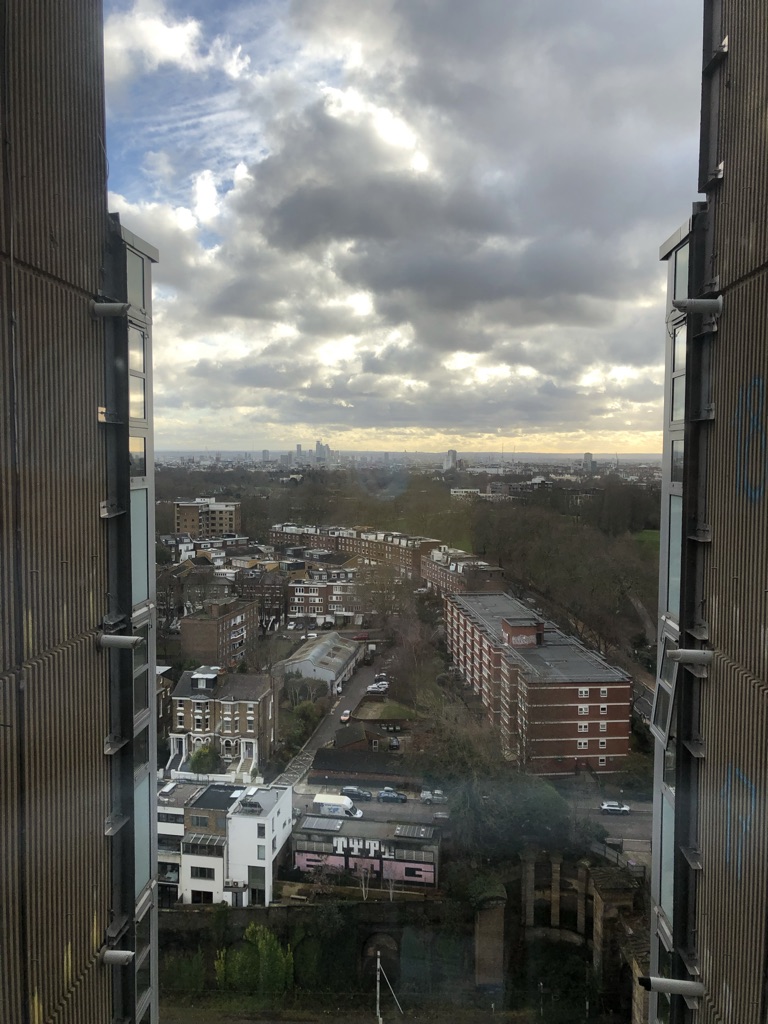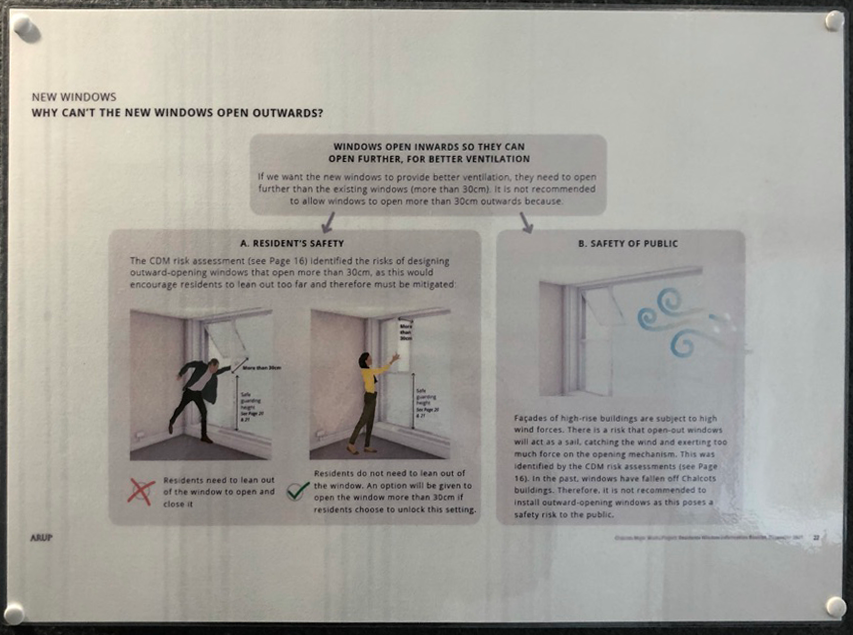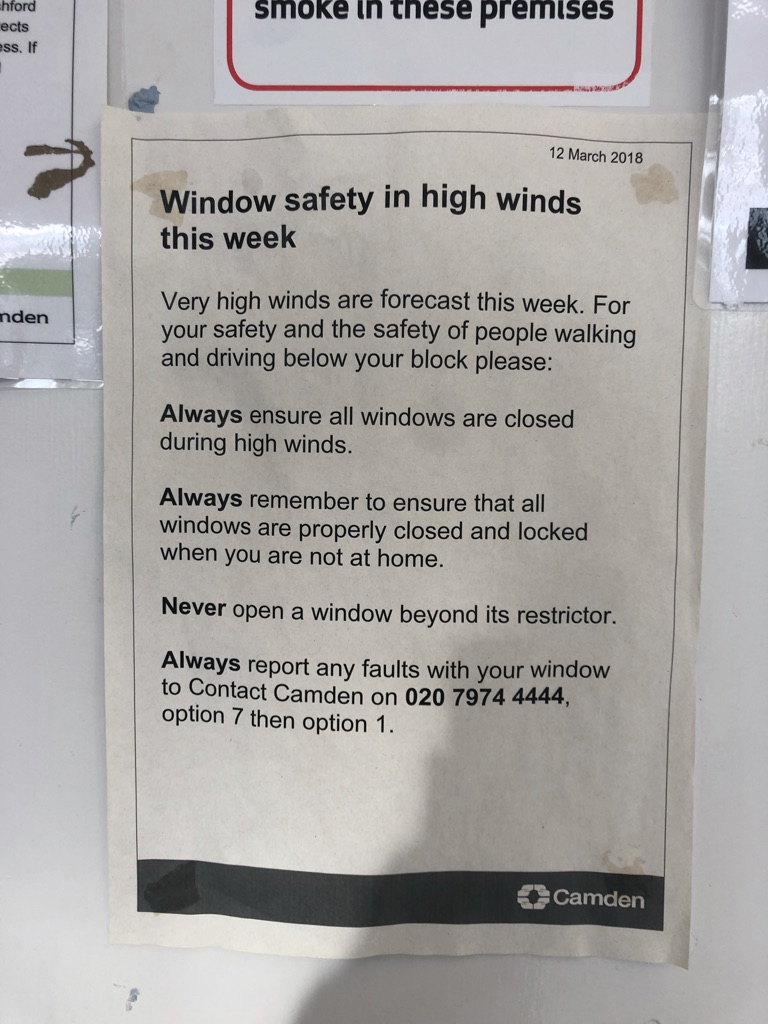The windows of Chalcots towers
The windows of the Chalcots Estate tower blocks are one of the key architectural elements and a link to many aspects of the resident’s everyday life. They represent a strong feature in design principles, providing all living room spaces no matter how many bedrooms with a large square window. These windows frame the most loved feature of life in the Chalcots Estate: the view. They link the external shared layer of living together in a high tower block, with the private dwelling. According to some of the residents, how neighbours behave in relation to the windows: how they take care of them, when they open them, and what they throw out of them has created spaces of friction and unwelcomed interaction. The windows seem to extend the area of shared neighbourliness to the immediate space around the outer layer of the building. This has held especially true since 2017. Following the Grenfell disaster when it was realised that in an effort to reduce costs through a Private Finance Initiative that combustible cladding had been used at Chalcots, the windows have become a new source of friction, loss, sadness and displacement.
While the flammable cladding was being removed, the body of Hannah Leonard, 55, who had been murdered was discovered by contractors who looked into her flat through the window. Since the cladding was removed in 2017, the towers have lacked insulation, exposing them to the weather and leading to soaring heating needs. Almost five years on, this has been exacerbated by the rise in energy prices and the cost of living crisis. As Chalcots is on a district heating system with gas bought and supplied by the council, the council has decided not to pass charges for additional gas usage since the cladding was removed onto residents. The installation of the new cladding and window systems finally began in 2022. While the refurbishment takes place, residents will be ‘decanted’ in groups of five floors and temporarily re-accommodated. Remaining residents will be provided with ‘respite spaces’ and informed about local amenities and community activities. As much as the works are welcomed, it represents a long term inconvenience to residents who will have a construction site around their windows for the next couple of years in addition to ongoing works for HS2.
The Chalcot’s windows represent the strongest element in the resident’s imaginary, but in the material realm they represent vulnerability and disruption.
A resident told us an anecdote of a few years ago when a can of aerosol exploded inside her flat, and the large square window of her living room immediately blew off, proving that pressure escaped through the weakest material layer of the flat. The new windows will have two designs and will provide improved ventilation, safety and insulation. The new windows were chosen following a two year consultation process with residents but are still a source of controversy for some residents. In this way, the window frames hold vulnerable thresholds between private and public, refuge and exposure, love and hate. Collectively they are reminders of the long term impacts of the difficult balance between local government, resident and private contractors’ interests.
[Link to Chalcots Estate]





